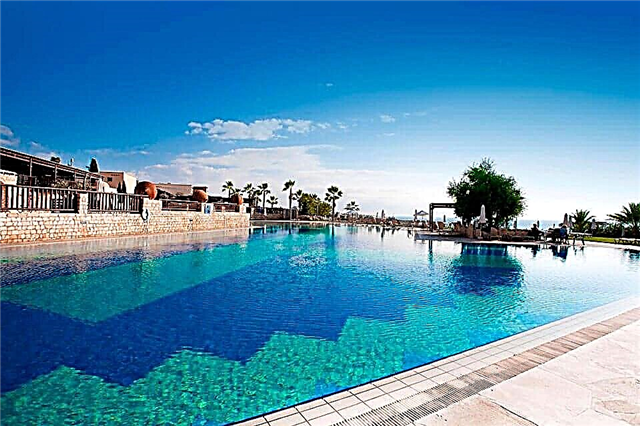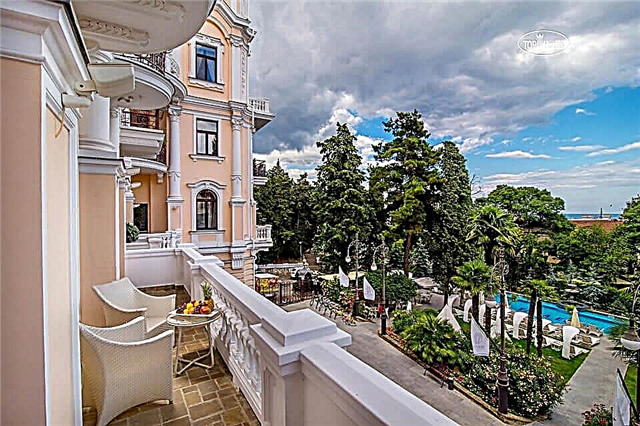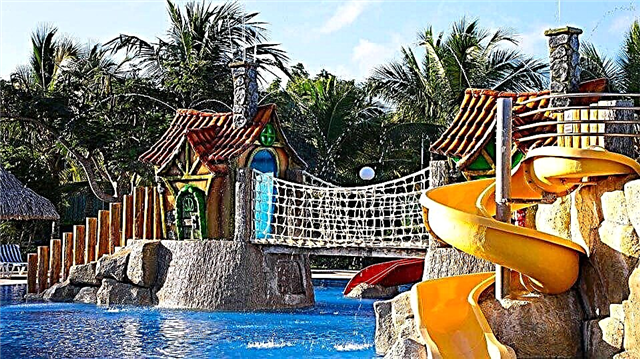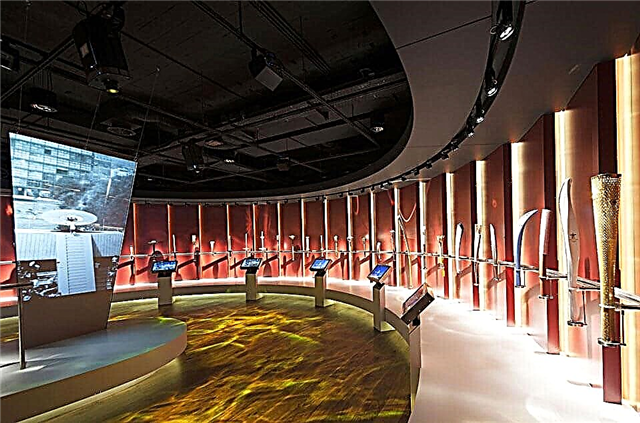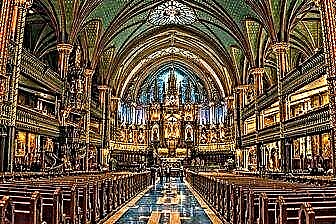Montreal allows the tourist to plunge headlong into French traditions with an American accent. The European spirit reigns here and at the same time the atmosphere of the western continent is clearly felt. On the one hand, gourmet cuisine and wine in restaurants, on the other, Indian totem poles in the Botanical Gardens. The Catholic churches of the Old City contrast well with the modern business districts, and the futuristic Biosphere rises audaciously over the serene scenery of the St. Lawrence River Valley.
The foundation stone of the city was laid by the French colonist Paul Chomedet de Maisonneuve. Several centuries later, the small settlement turned into a powerful industrial and commercial center, which plays an important role in the country's economy. For tourists, Montreal is a city of festivals, shows, entertainment and endless shopping. He is hospitable and always open to new guests.

The best hotels and hotels at affordable prices.
from 500 rubles / day
What to see and where to go in Montreal?
The most interesting and beautiful places for walking. Photos and a short description.
Old Montreal
The historic quarter of the city, within which the main attractions are located: the town hall, the Jacques Cartier bridge, the Notre-Dame de Montreal church, the clock tower and other places of interest for tourists. The history of this part of the city began in the 17th century, when the French settlement of Ville-Marie was founded. British colonists also made a significant contribution to the appearance of Old Montreal.

Mont Royal
A small hill with three peaks located within the Montreal city limits. The main attractions of Mont-Royal are a stone cross with a height of more than 30 meters and St. Joseph's Oratory - one of the largest Catholic churches in Canada. In 1876, a park appeared on the slopes of the hill, which eventually became a popular vacation spot for Montreal residents. Cycling is performed here in summer and skiing in winter.

Old Port of Montreal
An important transport hub in the past and a space for walking and relaxation in the present. Despite the loss of its strategic importance, the old port is still in operation, and ships often come here. Tourist liners are also moored here. A cozy park is laid out along the embankment, which is pleasant to stroll along on a fine day. The port has an IMAX cinema and a city science museum.

Oratory of Saint Joseph
Catholic basilica, built at the beginning of the 20th century. At first it was a modest chapel that could accommodate a small number of parishioners. In 1917, the need for expansion arose and a larger church was built. The third phase of construction began in 1924 and lasted until 1967. The founder of the temple, Brother Andre, was famous for his miraculous deeds, so numerous pilgrims visited the basilica.

Cathedral of Our Lady of Montreal
Montreal Cathedral, located within the historic city center. The building was built in the neo-gothic style. Its 70-meter bell towers dominate all the surrounding buildings. The temple was erected in 1672 at the expense of the Catholic community. In 1924, architect D. O'Donell began work on a new building. After completion in 1872, the basilica became the largest religious building in North America.

Cathedral of Mary Queen of Peace
Catholic temple of the late 19th century, located in the modern area of Montreal, surrounded by skyscrapers. The building was built in the Baroque and Renaissance styles. Its forms copy the outlines of St. Peter's Cathedral in the Vatican. Of course, the Montreal Cathedral is much smaller than its Roman counterpart, and there are also differences in the interior decoration. But in general, it is a miniature copy of the latter.

Notre Dame de Bon Secourt
The temple was erected in the 18th century on the ruins of an old chapel, which was damaged by a fire. The building was built in an interesting Norman Gothic style. A small museum of Marguerite Bourgeois, the saint founder of the female monastic order of the Mother of God, is open at the temple. The exposition introduces visitors to the early history of Montreal, the church itself, as well as the worldly deeds of Margaret.

Arts Square
The main cultural complex of Montreal, one of the largest in all of Canada. It is located in the eastern part of the city. The Arts Square is a multifunctional center where spectators can enjoy opera, ballet, drama, concerts and visual arts. The complex was created in 1963 at the initiative of the mayor J. Drapou.

Montreal Museum of Fine Arts
The gallery is considered one of the largest and most famous in all of North America. It was founded as the Fine Arts Association in the middle of the 19th century. The collection contains more than 30 thousand items from different eras, including an extensive art exhibition with paintings by famous European painters. Most of the collection was donated from local patrons.

Pointe-a-Calier Museum
Archaeological Museum, which opened in 1992 to celebrate the 350th anniversary of Montreal. The complex of buildings is located in the heart of the Old Town. The museum consists of exhibition halls, a multimedia center, conference rooms and research rooms. It has its own permanent exhibition and temporary vernissages are often held.

Montreal Biodome
Montreal Biodome combines a science center, an ecological park with imitation of five ecosystems at once and a zoo under one roof. It is located in the building of the former velodrome, built for the 1976 Olympics. The main mission of the center is environmental education and promotion of a responsible attitude to the environment. It often hosts lectures and shows films about nature.

Montreal insectarium
The collection of the insectarium was based on the frequent collection of the entomologist J. Brossard. It was thanks to him that a special place appeared in the city where visitors can look at all possible insects. The Insectarium opened to the public in 1990 and has since become one of the most visited attractions in Montreal. More than 250 thousand different species are represented here, more than 100 of them are alive.

Biosphere
A unique museum located on the island of St. Helena. Its exposition is dedicated to the water resources of the St. Lawrence River. The unusual structure resembles a huge soap bubble made of metal lace, inside which engineering structures are placed. The biosphere was created for the 1967 World's Fair and later handed over to the city authorities. The museum opened in 1990.

Montreal City Hall
City Council building located in the historic center. The first town hall was built according to the project of A.-M. Perrault and A. Hutchison in the style of the "second Empire". As a result of the fire in 1922, only the walls remained from the structure. The restoration work was carried out under the supervision of L. Parant, who gave the building the features of a boz-ar style. In 1984, the town hall was declared a national monument.

Habitat 67
An unusual residential complex in the style of brutalism, designed by M. Safdie in the 60s of the XX century. It was built for the opening of the 1967 World's Fair, the theme of which was residential construction. In fact, Habitat 67 is an apartment building consisting of cubes that have grown together with each other. Thanks to the design features, each apartment owner has his own private garden on the roof of a neighbor.

"Underground city"
A system of tunnels, passages, halls, metro stations and shopping galleries located underground. Some residents refer to this space as "inner Montreal".There are also residential apartments, offices, cinemas and restaurants, among which it is quite easy to get lost. Often, residents use the roads of the "underground city" to avoid traffic jams and get to the place faster.

Bonsecourt market
Bonsecourt is not exactly a market in the usual sense. Rather, it can be considered a shopping center, which houses some of the most expensive shops in Montreal. Small boutiques sell furniture, tableware, stone and wood crafts, clothing, paintings and jewelry. All this commercial diversity occupies a monumental 19th century building that looks more like a parliamentary meeting room.

Market "Jean-Talon"
Farmers' market for healthy and healthy food. A huge variety of fruits, vegetables, mushrooms and herbs awaits buyers on the shelves. Everything looks pretty fresh, appetizing and is quite inexpensive considering the local price level. From exotic - zucchini flowers, which, it turns out, can be fried and eaten. They taste no worse than the zucchini themselves.

Circuit named after Gilles Villeneuve
The Canadian stage of the Formula 1 race (Canadian Grand Prix) is taking place at the circuit. It is a rather winding track, laid among lakes and park pavilions. There are many sharp turns, which requires professionalism and maximum concentration of attention from the pilots. Interestingly, outside of racing, some sections of the circuit are used as public roads.

Montreal Botanical Garden
In 2008, the garden was recognized as a Natural Monument of Canada due to the incredible variety of species growing on its territory. Here are collected plants from all over the world. In the open air, there are several thematic zones dedicated to individual countries or places on the planet: China, Japan, the Alps, and northern territories. The garden was founded in 1931 at the height of the Great Depression.







